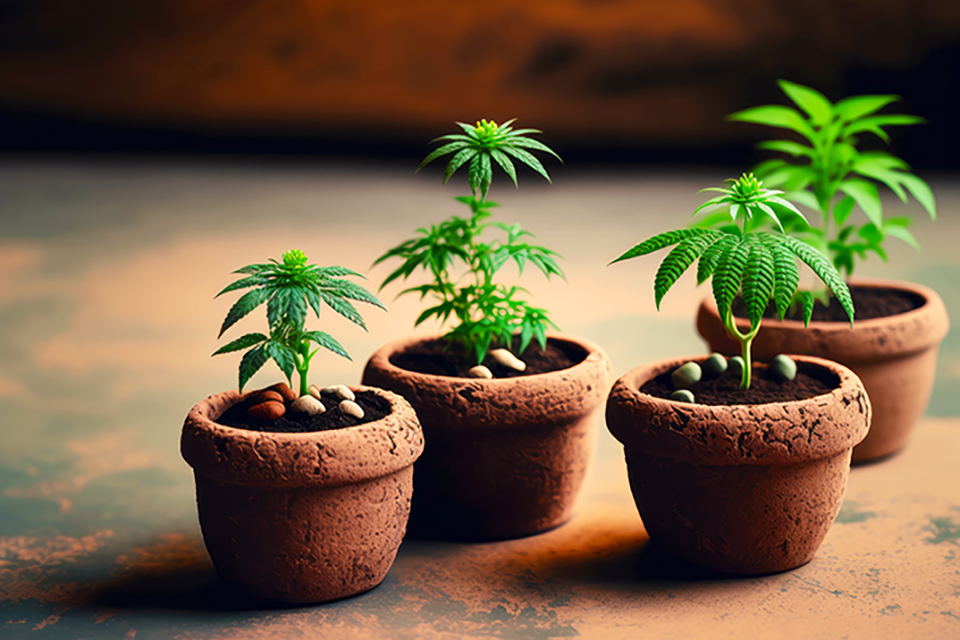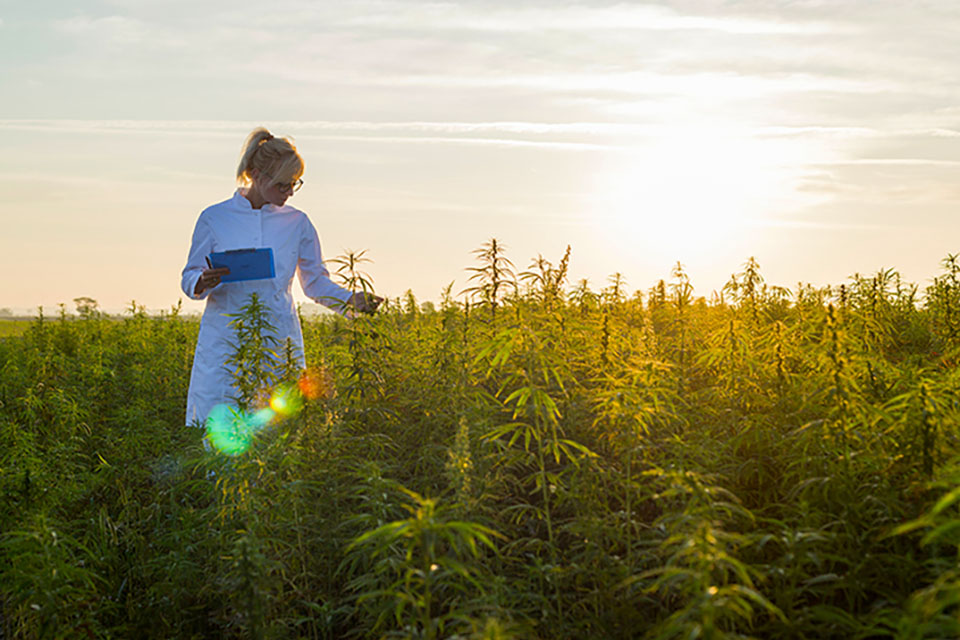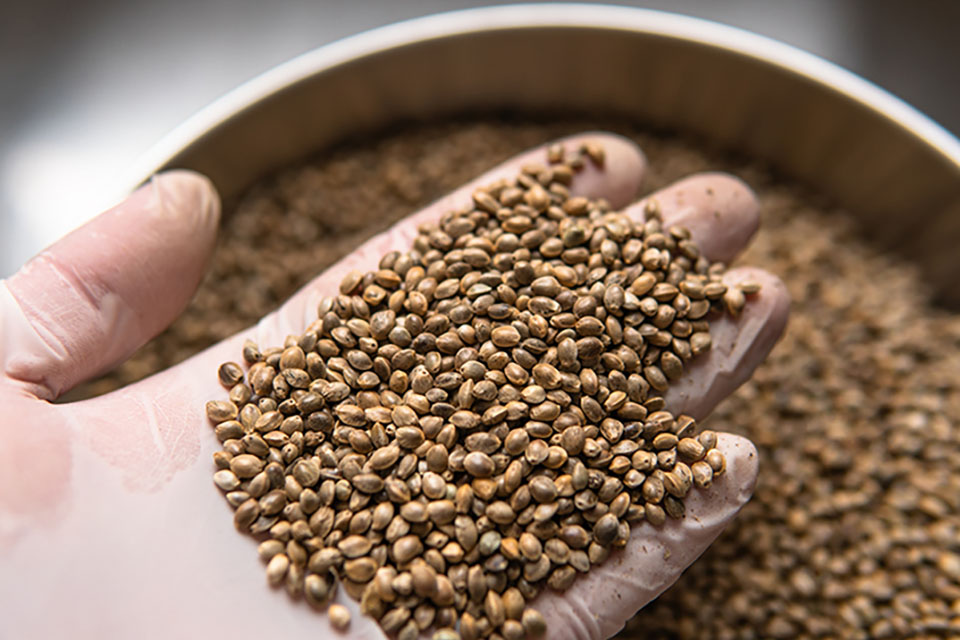
What Are Photoperiod Weed Plants?
Photoperiod marijuana plants comprise the Weed Seeds cannabis seed collections which have either been unmodified or left in their original form, and it covers those which have been feminized. Photoperiod marijuana strains rely on shifts in light duration and color temperature to let them know when to start the flowering phase. In indoor spaces or controlled environments, this is at the whim of the grower and is only triggered once the grower is satisfied that their plants are ready for the shift. Starting at eighteen to twenty hours of light per day, a photoperiod strain grown indoors will continue its growth cycle, otherwise known as vegging, until the grower switches the lighting systems to a twelve-hour cycle. Once triggered, photoperiod marijuana plants stretch, then start to flower. For unmodified or regular seeds, this is the time when males will reveal themselves and must be removed, unless left for breeding purposes. Females will show calyxes and males put out pollen sacs that resemble little flowers, so telling them apart is easy. Feminized seeds will all become rich with flowers, thus negating the need to sex crops at preflower. Photoperiod strains grow bigger, bolder, is higher in cannabinoid concentrations and they deliver much more than their autoflowering counterparts. Finally, photoperiod strains grow award winning weed when parented appropriately, in the right venue and through right training methodologies, so take your time with them, treat them well, and your efforts will pay off come harvest time.
What Are Autoflower Marijuana Plants?
Autoflower marijuana plants make up the fastest flowering family in cannabis. Born of photoperiod strains and crossed with cannabis ruderalis to become automatic, autoflowering cannabis plants are fast, undemanding and simple for anyone to grow. Ruderalis was discovered flourishing in Eastern Europe’s cooler climes and over time it has developed into a fast and resilient species of cannabis which, due to short, cold seasons, has evolved to flower without environmental triggers. Crossing this little lovely with history’s most famous strains has turned the growing world on its head. Autoflowers provide the space for anyone with a bit of a green thumb to be able to grow weed, regardless of their impairments, lack of experience or time constraints. Because automatic strains are on a timeline rather than their behavior being dictated by the wobble of the earth, it is wise to disrupt them as little as possible. Plant autoflowering seeds directly into soil or rockwool, and as soon as they break the surface, they are already growing strong. Though some more advanced growers have seen success with topping autoflowers, we do not recommend it. Autos need only LST or low-stress training, such as bending and tying, and growers would do well to spread the branches out as much as possible to spark deeper bud sites to life. Finally, inside or out, these plants generally go from start to finish in as little as a couple months, so growers are free to fit a couple runs into a single season.
Autoflowering vs Photoperiod Cannabis
Though both are cannabis and each have their place in grow spaces far and wide, there are a number of differences between photoperiod and autoflower plants which any would-be grower does well to understand. Photoperiod seeds require specific germination practices and multiple transplants, while autoflowers do best when sown into their final pots. Where photoperiod strains require eighteen to twenty hours of light for vegetation phases, they require a shift to twelve hours of light per day to flower. Autoflowers run on eighteen to twenty hours of light for the duration and need no alarm to know when to start flowering. Where a wise grower tops photoperiod strains numerous times to affect the masses of branching necessary for prize winning colas, the autoflower doesn’t like to be topped. Instead, an auto performs best when branches are simply spread out. Where photos like to be thinned out a number of times throughout their life cycles, autoflowers require only leaf tucking. Since they operate on a timeline rather than through photosensitivity, it is best to leave as much photosynthesizing material on automatic strains as possible, especially if you want a strong harvest. Automatic cannabis strains are generally smaller and deliver less product, are less potent, but just as beautiful as their photoperiod parents. Finally, as far as environmental control goes, autoflowers and photoperiod strains both require the same care, cleanliness and dedication to proper feeding and pest control if the grower is to see success.
Should You Grow Photoperiod Plants?
The question of whether to grow photoperiod strains or not comes down to a number of factors. How much time do you have to spend with your crop? What level of experience do you have? How much energy are you willing to donate to cannabis cultivation and how enthusiastic are you about your charge? All of these factors play a role in appropriate decision making. Photoperiod strains can become large and unwieldy, so it pays to factor in the problem of space. Whether you plan to grow year-round is another question to answer. If so, then chances are you have an indoor space prepared, and if this is the case, photoperiod strains are a great move as they deliver more buds and offer full control over all stages of development. If you are lucky enough to live in a sunny and warm climate with a year-round growing season, then there is literally no limit to what you can grow, so go ahead and try all of our strains. Your level of experience, though not a deal breaker, does play a role in how well the final product turns out. Some growers like to dive in headfirst and learn through a baptism by fire. Others like to have an idea of what they are getting into and thus opt to start with autos. If you are confident that you have the time and space, that you have the experience and can train plants correctly, then photoperiods are the way to grow.
Should You Grow Autoflower Plants?
For many growers and consumers throughout the world, autoflowers are the go-to for home based cultivation. Not only are these plants fast, but they demand very little from their caretakers in the way of training or technique. Autoflowering cannabis plants are perfect for those with limited mobility or energy, those with little experience or who, for any other reason, may not be able to keep up with the numerous pressures of photoperiod cultivation. Autoflowers suit those limited for space as well. Since they remain small and manageable, autoflowers make a beautiful addition to any garden or greenhouse, even the corner of a room or a sunny window. That being said, autos do best when offered the same environments as you would for photoperiod strains. Light levels are best kept high, nutrients are important to find balance with and get right, and humidity and airflow are nearly identical to the needs of photoperiod botanicals. For home-based growers who like to have variety in their stash, autoflowers are ideal. They finish quickly in just eleven to fifteen weeks all in, and because of this, growing numerous runs per year is an easy task to do well. If you find strains similar in their growth habits you can even have a number of different strains all growing and flowering at once, and this is not something you can say about photoperiod plants. Finally, for those who really like to do nothing but watch, your autoflowering cannabis will still explode with potential.
Growing Photoperiod Plants Indoors
Growing photoperiod strains indoors is the first and foremost way to cultivate award crushing cannabis. Indoor gardening allows you full control over the environment in which you raise your crops and is a safer alternative to the risks associated with outdoor cultivation. Unless you live in latitudes which deliver month after month of interruption free weather patterns, for most of us indoors is the only sure way to get through the cannabis life cycle in one piece. Photoperiod females are simple to grow since you don’t have to worry about sexing your crop or locating males for swift removal. However, natural seeds, free of modification, are a little trickier and require the grower to know the differences between male and female plants. Regardless, if it is big time buds you want then inside is where you’ll make your mark. Indica species are simpler than sativas and are best managed on tight clone rotations in a Sea of Green (SOG) setup. Sativas on the other hand, though they can be trained SOG style, deliver larger and more balanced harvests when they are grown using Screen of Green (ScrOG) techniques. Either way you choose to go, indoor cultivation requires a dedicated dark space, high quality lights and air filtration, a clean environment and vapor pressure deficit appropriate to each stage of development. Manage your photoperiod plants well, and in anywhere from four to six or seven months, you will be celebrating huge hauls of high-test herb.
Growing Autoflower Plants Indoors
Growing autoflower plants indoors adds layers of latitude to what is already a pretty sure thing. Autoflower cannabis plants grow easily when germinated directly into the medium and the pot they will spend their lives in. These seeds require all the same environmental controls as photoperiod strains, save one important characteristic. Automatic strains do not need a shift in light schedules to flower. Set your timers to deliver eighteen to twenty hours of light per day and forget about it. These plants are so simple that they only need a one-gallon pot of high quality living soil with the odd amendment, such as phase appropriate teas and worm castings, and they will live out their lives in happy bliss. Another nice thing about growing autoflowers indoors is that they never take up much space. The odd closet, small tent or attic has served auto growers well, and these spots still reign supreme for most home-based enthusiasts. When you have high quality lights such as a balanced LED or HID blend, and when your humidity, pH, airflow and nutrients are at ideal levels, the only thing left in automatic growing is training. Because of the size of autos, they fit no matter what you do. However, thanks to their growing on a brief schedule, you are limited to how far you can push pruning. Like photoperiod strains, an auto still needs a flush, so stop feeding at least two weeks before your plants finish and provide only pure water.
Growing Photoperiod and Autoflower Plants Outdoors
Though no one is quite sure when cannabis came to fruition, we do know that most species respond to seasonal shifts in temperature and light. The exception to the rule is cannabis ruderalis, which is fast, resilient, and automatic. Growing either photoperiod or automatic cannabis plants outdoors both have their pros and cons. Autoflowers are small, compact, and some grow from seed to harvest in as little as eleven weeks. Though few autos can handle a cold start, it is safe to plant them at the same time as you plan to place your photoperiod strains outside. Which brings us to starting seeds indoors, a necessary practice in the majority of the world of cannabis cultivation. Where an auto will just keep growing, maybe requiring some added ventilation along the way, photoperiod strains only start flowering when the weather changes. Though it is rare to see any plants taking longer than seven months, if you live in more northern latitudes the onset of fall can spell disaster for a poorly timed photoperiod strain. Growing outdoors is wonderful when it works and with autoflowers success is almost guaranteed. However, a photoperiod strain is much more sensitive, as it needs so much more time, and also needs certain protective measures to be in place. This could be as simple as a canopy and as complicated as a heated greenhouse. Whatever you choose to do, whatever strains you choose to grow, the health of the plant must always come first.



